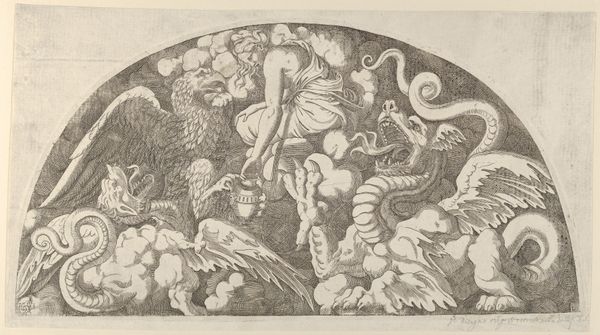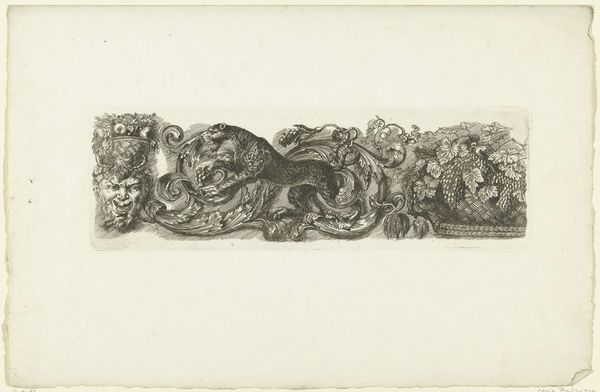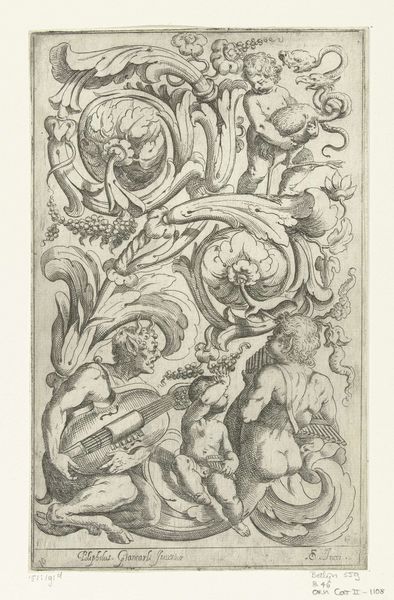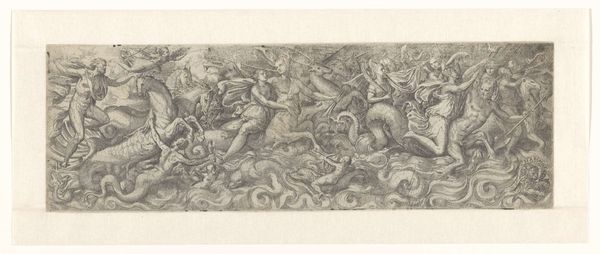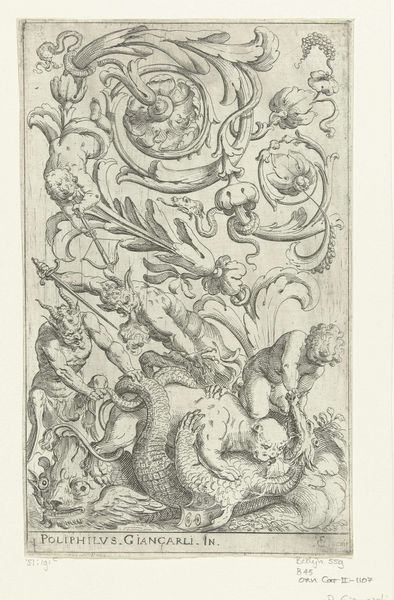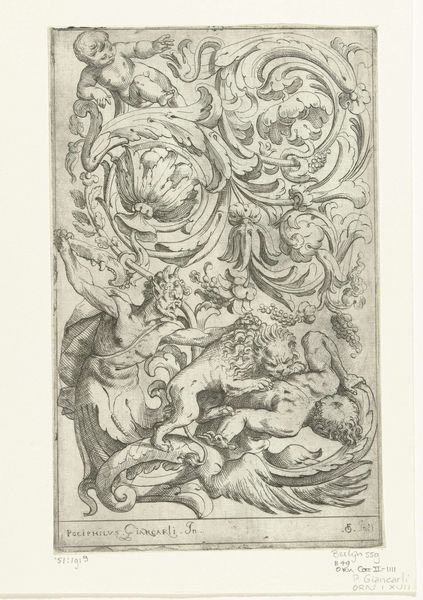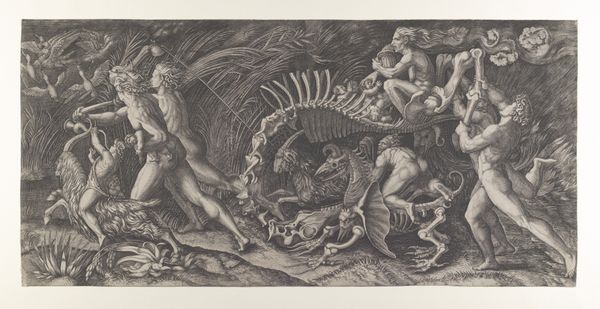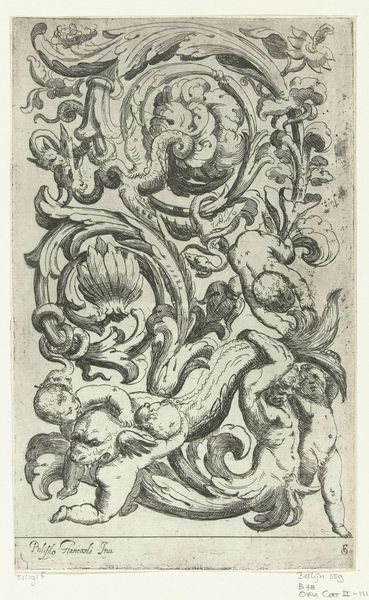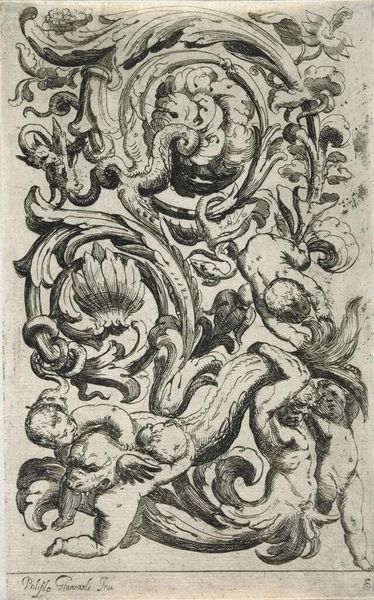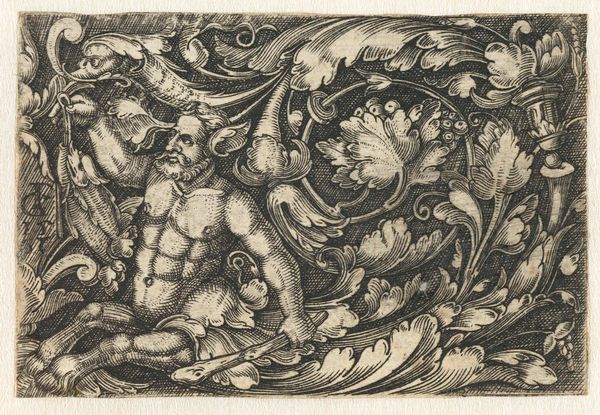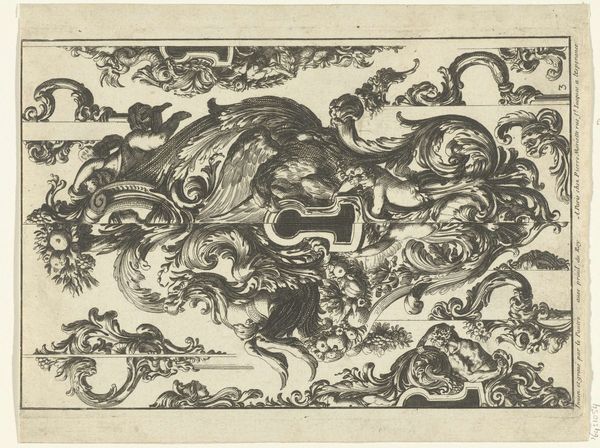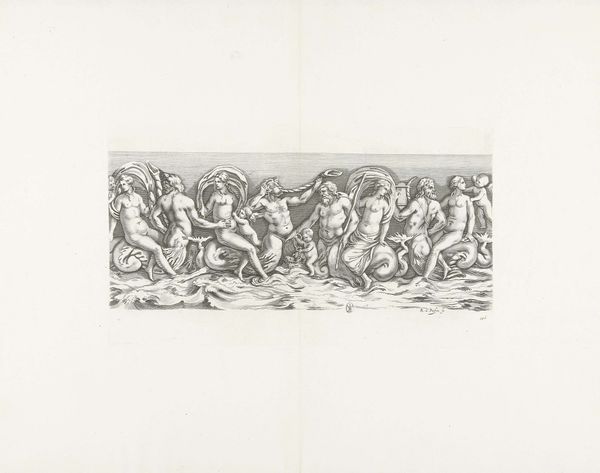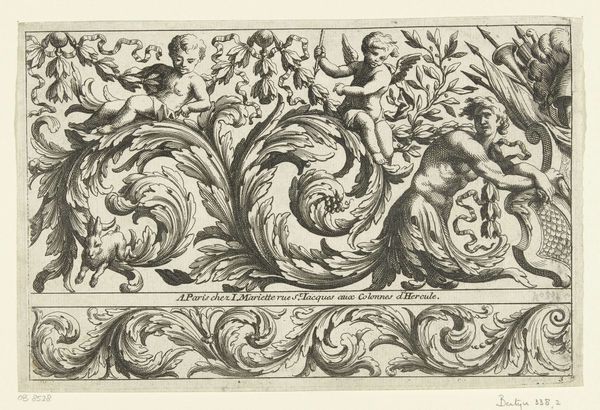
print, engraving
#
allegory
# print
#
classical-realism
#
figuration
#
ancient-mediterranean
#
history-painting
#
engraving
Dimensions: height 45 mm, width 315 mm
Copyright: Rijks Museum: Open Domain
Editor: This is "Fries met de triomf van Neptunus," a print made after 1548, artist unknown, in the Rijksmuseum collection. It's such a densely packed scene! All the figures kind of blur together at first glance. What's your read on it? Curator: What interests me here is the reproduction of power through printed material. This engraving, existing as a relatively inexpensive and reproducible format, depicts Neptune's triumph, thus democratizing an elite vision of authority. Consider the labour involved in producing multiples of this image – the engraver, the paper maker, the printer – each playing a part in disseminating this message to a wider, potentially less privileged, audience. Editor: So, it's less about *what* the image depicts and more about *how* it was made and circulated? Curator: Precisely. This print blurs boundaries. Was it conceived as art, as propaganda, or simply as decoration? These distinctions are imposed later. More significant is the understanding that the raw materials - the metal plate, ink, paper - and the hands that manipulated them contributed to both the physical reality and social circulation of this "triumph." The accessibility offered by printed images recontextualizes classical narratives. This brings into question the consumption patterns of the time and the power dynamics inherent in image dissemination. What class of people might own or view this, and how does its message shift when viewed through their lens? Editor: That's fascinating! It makes me think about how we consume images today versus how they would have been received then. Curator: Exactly! Understanding the materiality of art challenges us to rethink art history through the lens of production and consumption rather than purely through aesthetics. Editor: I’ll definitely look at prints differently now, considering their production process and the materials. Curator: And I hope it prompts further exploration into how artistic labor and material conditions shape our understanding of culture.
Comments
No comments
Be the first to comment and join the conversation on the ultimate creative platform.

